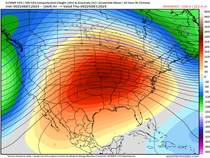WELCOME TO METEOROLOGICAL SPRING....
- rebeccakopelman
- Feb 28, 2021
- 2 min read
ONLY 47 COPIES LEFT:
I will take this opportunity to mention that I only have 47 copies left of the book on the most expensive thunderstorm in United States history (13 billion dollars in estimated damage). This will be the final printing. If you are interested in having the most authoritative account of this extreme event I would suggest you act now. Don't miss this opportunity to own the weather story of a generation. You can order yours at derechobook.com
A SECOND PRINTING OF TERRY'S NEW BOOK IS AVAILABLE...
BOOK ENDORSEMENT.
*This book has been quite the talk with the Iowa State Library promoting it. I have never seen the State Library promote any books like this unless it was an award winner of particular interest to libraries. Hopefully your sales are through the roof!
Jolene Kronschnabel-Director of Hawkins Memorial Library, La Porte City, Iowa
-----------------------------------------------------
Meteorological Spring begins March 1st. This - unfortunately - does NOT mean winter is over, but is a benchmark toward warmer weather.
Here's a breakdown from the National Oceanic and Atmospheric Administration on the differences between the meteorological and astronomical seasons:
Meteorologists and climatologists break the seasons down into groupings of three months based on the annual temperature cycle as well as our calendar. We generally think of winter as the coldest time of the year and summer as the warmest time of the year, with spring and fall being the transition seasons, and that is what the meteorological seasons are based on.

The natural rotation of Earth around the sun forms the basis for the astronomical calendar, in which we define seasons with two solstices and two equinoxes. Earth’s tilt and the sun’s alignment over the equator determine both the solstices and equinoxes. The equinoxes mark the times when the sun passes directly above the equator.
However, we know from experience that whether it's the beginning of the meteorological or astronomical season.. it's not a flip of a switch. The transition times between seasons can bring the wonkiest weather and lead to big ranges in temperatures and precipitation types.
However, hopefully we can work our way up from how February went.

Temperatures for the month have been running 10 to 20 degrees below normal and we're working our way out of that hole.
Here's a look at the pattern on the European model the next 10 days:

You can see a lot of yellow, orange, and red indicating a ridge (and warmer air) in the upper levels of the atmosphere. Now this doesn't mean every single day is going to be warm or precipitation free, but it is a good trend. And you can see how it plays out here with the Climate Prediction Center Outlook:

Temperatures will likely be above normal through the first two weeks of March. Here's a look at the temperatures on the Euro for Cedar Rapids:

And Davenport:

Enjoy the thaw!














Comments